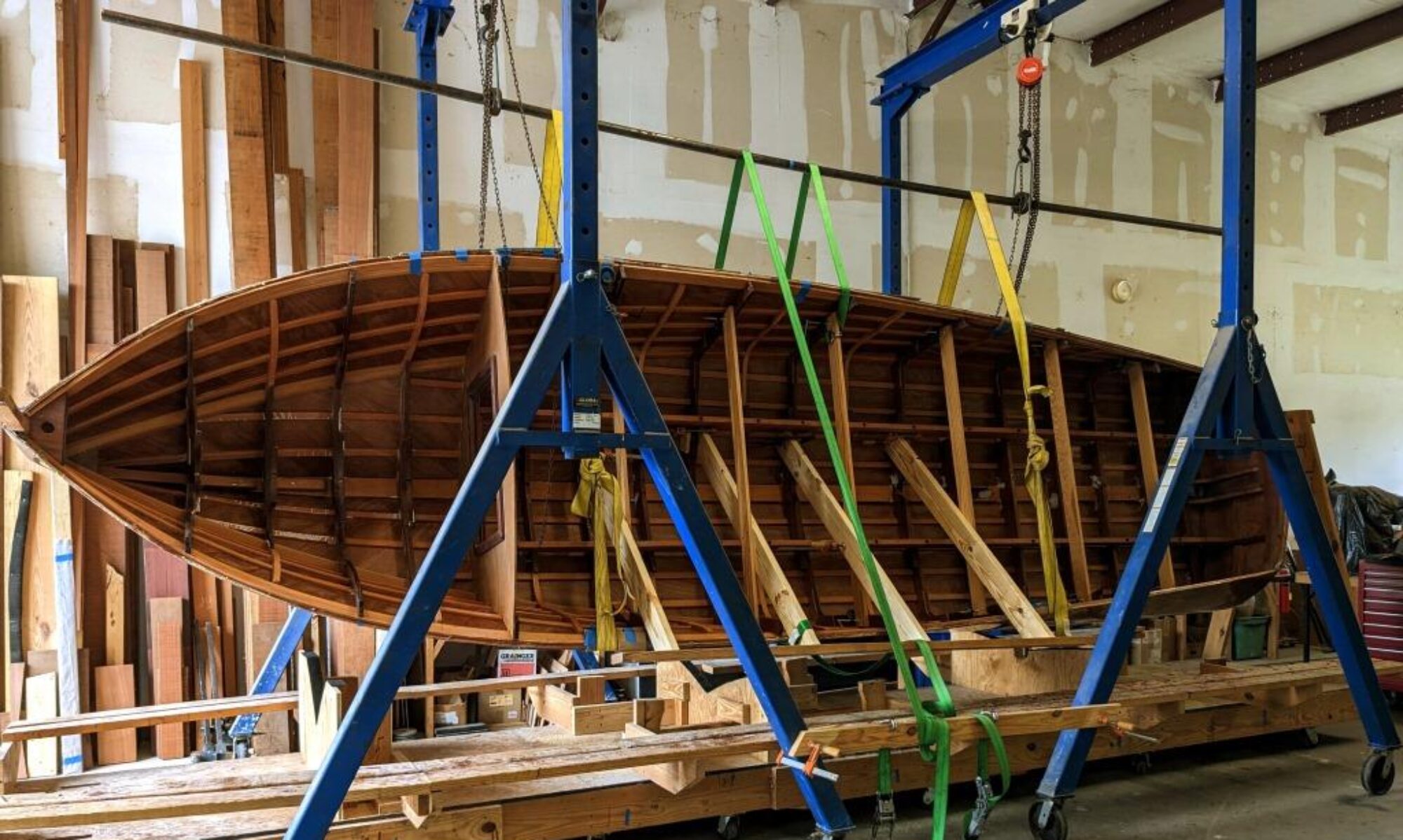
So we’ve got the bottom off (see Remove the Bottom), what now? Well let’s take a moment to look at the chines (the longitudinal piece of lumber that creates the “corner” between the topsides and the bottom). While we’re at it, we’ll take a look at the keel as well. These pieces are made of white oak, so that’s good material. But they’re also 60 years old, and very perforated. The keel is oil-soaked under the engine, which weakens wood considerably. It also has a bad dip in it forward, with no good way to smooth that out. Once you’ve come this far, you’d be crazy not to replace these pieces. So off they come.
In order to get the chines off, you have to remove the first topsides strake (plank) next to the chines.

The first step in removing the topsides strake is to strip the varnish off it to make removal of the bungs easier.

We haven’t made a decision yet on whether to replace this plank, so to avoid splintering around the bung holes when removing bungs, we strip the finish which acts as a glue and can pull splinters of this delicate old wood.

Once the finish is stripped, the bungs can be removed by splitting them with an ice pick, and pulling the pieces out carefully. This exposes the screw heads which you can carefully back out, trying not to catch on the side of the bung holes and splintering the wood. You will inevitably break some screws and find some already broken. Mark them for later drilling and extraction.

After you’ve got the planks removed on both sides of the chine, it’s a pretty simple matter to unfasten the chine and remove it. Broken fasteners holding the chine in shouldn’t present too much of a problem since we’re replacing the chines and the bottom frames.
